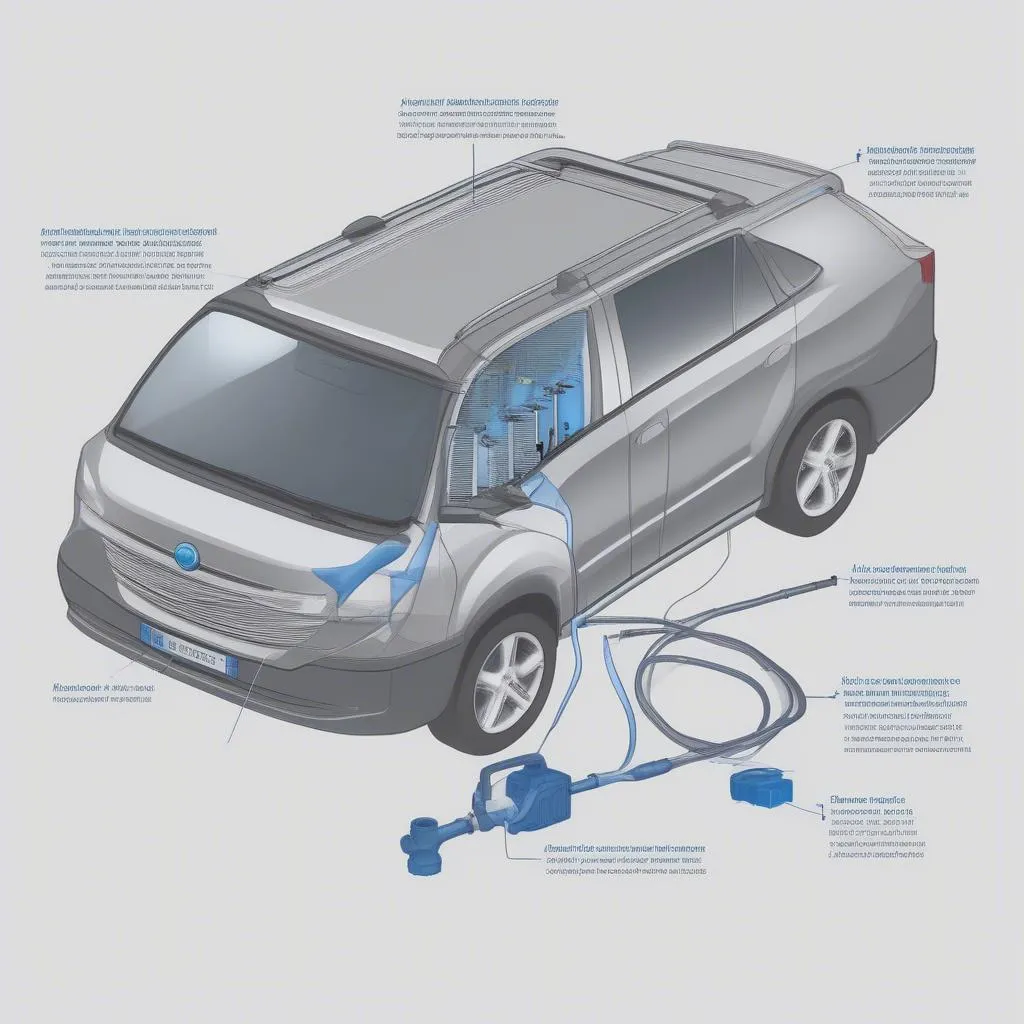The brake pressure differential valve warning light switch is a crucial component of your vehicle’s braking system. When illuminated, this warning light signals a potential issue with the hydraulic pressure distribution between your front and rear brakes. Ignoring this warning light can compromise your vehicle’s braking performance, leading to dangerous driving conditions.
Understanding the Brake Pressure Differential Valve
The brake pressure differential valve, sometimes referred to as the “brake proportioning valve”, plays a critical role in maintaining balanced braking. Its primary function is to regulate the distribution of hydraulic pressure between the front and rear brakes during braking. This ensures that the braking force is applied proportionally, preventing the rear wheels from locking up prematurely and causing a loss of control.
Common Causes of a Brake Pressure Differential Valve Warning Light
There are several reasons why your brake pressure differential valve warning light might illuminate. These include:
- Low brake fluid level: This is the most common cause. Insufficient brake fluid can disrupt the hydraulic pressure within the system, triggering the warning light.
- Worn or damaged brake lines: Leaks in the brake lines can lead to pressure loss, affecting the valve’s ability to function correctly.
- Faulty brake pressure differential valve: Over time, the valve itself can wear out or malfunction, requiring replacement.
- Issues with the ABS system: In vehicles equipped with Anti-lock Braking Systems (ABS), problems with the ABS module or sensors can sometimes trigger the brake pressure differential valve warning light.
Diagnosing the Problem
Identifying the root cause of the warning light is essential for effective repair. Here’s a step-by-step guide:
- Check the brake fluid level: Park your car on a level surface and locate the brake fluid reservoir. The reservoir will typically have a “min” and “max” marking. If the fluid level is below the “min” mark, add the appropriate brake fluid recommended in your owner’s manual.
- Inspect the brake lines: Carefully examine all visible brake lines for any signs of leaks, cracks, or damage. Pay close attention to areas where the lines connect to other components.
- Consider the age and condition of your brake system: If you haven’t had your brake system serviced recently, it’s advisable to take your vehicle to a qualified mechanic for a thorough inspection.
Repairing the Issue
The repair for a brake pressure differential valve warning light will depend on the underlying cause:
- Low brake fluid: If you identified low brake fluid, simply adding more fluid might suffice. However, it’s crucial to determine the cause of the low fluid level, as it could indicate a leak in the system.
- Brake line issues: Any damaged or leaking brake lines must be replaced immediately to ensure safe braking performance.
- Faulty brake pressure differential valve: A malfunctioning valve typically needs to be replaced with a new one.
- ABS problems: Diagnosing and repairing ABS issues often requires specialized diagnostic equipment and expertise. It’s best to consult a qualified mechanic.
“Ignoring a brake pressure differential valve warning light can have serious consequences,” warns John Smith, a certified automotive technician with over 20 years of experience. “Addressing the issue promptly ensures your safety and prevents further damage to your braking system.”
Resetting the Warning Light
After addressing the underlying issue, the warning light should go off. However, in some cases, you might need to manually reset the light. The procedure for resetting the warning light varies depending on the make and model of your vehicle. Consult your owner’s manual or seek guidance from a qualified mechanic.
Preventing Future Issues
Regular maintenance is key to preventing problems with your brake pressure differential valve. Here are some preventative measures:
- Regular brake fluid checks and changes: Check your brake fluid level at least once a month and have it flushed and replaced according to your vehicle manufacturer’s recommended service intervals.
- Timely brake inspections: Have your entire brake system inspected annually or as recommended in your owner’s manual.
By understanding the function and common issues associated with the brake pressure differential valve warning light switch, you can take proactive steps to ensure the safety and reliability of your vehicle’s braking system. Remember, when it comes to brakes, timely diagnosis and repair are crucial for a safe driving experience.

